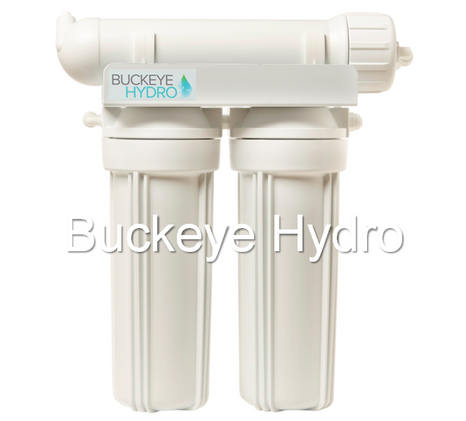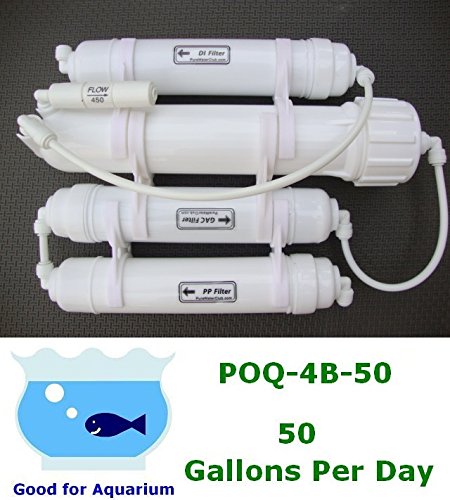I had my water tested, and now need some advice on what to do with the information. I tested two samples. The first is my untreated, raw well water. The second sample was the same raw well water run through a whole house water softener and then through my reverse osmosis system. I was really surprised by the amount of sodium in the raw water, but it does make sense as I am near the Brazos River, and one of its sources is salt water.
Sample #1 - raw well water
pH 7.3
Total dissolved solids 681
Electrical conductivity 1.13
Cations/anions, me/L 12.0/11.7
Sodium 99 ppm
Potassium, K 2 ppm
Calcium, Ca 128 ppm
Magnesium, Mg 15 ppm
Total hardness, CaCO3 383 ppm
Nitrate, NO3-N 4.5 ppm
Sulfate, SO4-S 12 ppm
Chloride, Cl 95 ppm
Carbonate, CO3 <1.0 ppm
Bicarbonate, HCO3 481 ppm
Total alkalinity, CaCO3 395 ppm
Phosphorus, P 0.04 ppm
Iron, Fe <0.01 ppm
Sample # 2 - well water, softend and RO
pH 7.1
Total dissolved solids 690
Electrical conductivity 1.15
Cations/anions, me/L 10.5/10.4
Sodium 236 ppm
Potassium, K <1 ppm
Calcium, Ca 4 ppm
Magnesium, Mg <1 ppm
Total hardness, CaCO3 10 ppm
Nitrate, NO3-N 4.6 ppm
Sulfate, SO4-S 11 ppm
Chloride, Cl 94 ppm
Carbonate, CO3 <1.0 ppm
Bicarbonate, HCO3 406 ppm
Total alkalinity, CaCO3 333 ppm
Phosphorus, P 0.04 ppm
Iron, Fe <0.01 ppm
From what I've researched, my raw water is probably pretty decent for brewing except for the high sodium content. I was also a bit surprised by the chloride content, as this water is not treated in any way. Anyhow, which water would you use and how would I go about adjusting its profile for brewing? I brew mostly German beers, but my mind has been opened to the world of porters and stouts over the last week. My brews tend to be on the darker, maltier side of things. I have almost zero interest in brewing IPA style beers. Thanks for any insight y'all can provide me.
Sample #1 - raw well water
pH 7.3
Total dissolved solids 681
Electrical conductivity 1.13
Cations/anions, me/L 12.0/11.7
Sodium 99 ppm
Potassium, K 2 ppm
Calcium, Ca 128 ppm
Magnesium, Mg 15 ppm
Total hardness, CaCO3 383 ppm
Nitrate, NO3-N 4.5 ppm
Sulfate, SO4-S 12 ppm
Chloride, Cl 95 ppm
Carbonate, CO3 <1.0 ppm
Bicarbonate, HCO3 481 ppm
Total alkalinity, CaCO3 395 ppm
Phosphorus, P 0.04 ppm
Iron, Fe <0.01 ppm
Sample # 2 - well water, softend and RO
pH 7.1
Total dissolved solids 690
Electrical conductivity 1.15
Cations/anions, me/L 10.5/10.4
Sodium 236 ppm
Potassium, K <1 ppm
Calcium, Ca 4 ppm
Magnesium, Mg <1 ppm
Total hardness, CaCO3 10 ppm
Nitrate, NO3-N 4.6 ppm
Sulfate, SO4-S 11 ppm
Chloride, Cl 94 ppm
Carbonate, CO3 <1.0 ppm
Bicarbonate, HCO3 406 ppm
Total alkalinity, CaCO3 333 ppm
Phosphorus, P 0.04 ppm
Iron, Fe <0.01 ppm
From what I've researched, my raw water is probably pretty decent for brewing except for the high sodium content. I was also a bit surprised by the chloride content, as this water is not treated in any way. Anyhow, which water would you use and how would I go about adjusting its profile for brewing? I brew mostly German beers, but my mind has been opened to the world of porters and stouts over the last week. My brews tend to be on the darker, maltier side of things. I have almost zero interest in brewing IPA style beers. Thanks for any insight y'all can provide me.



